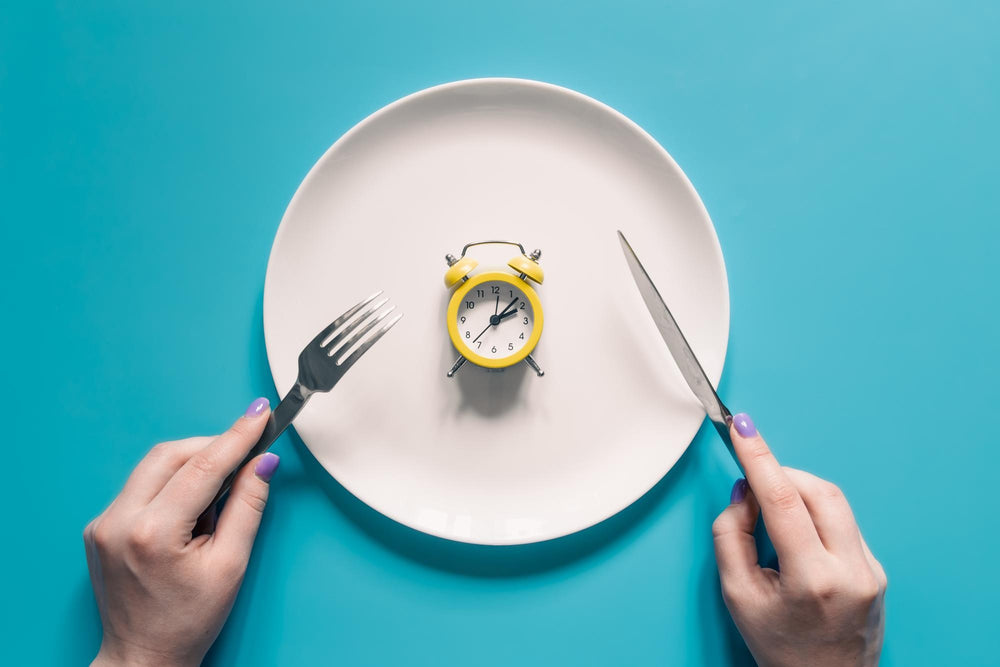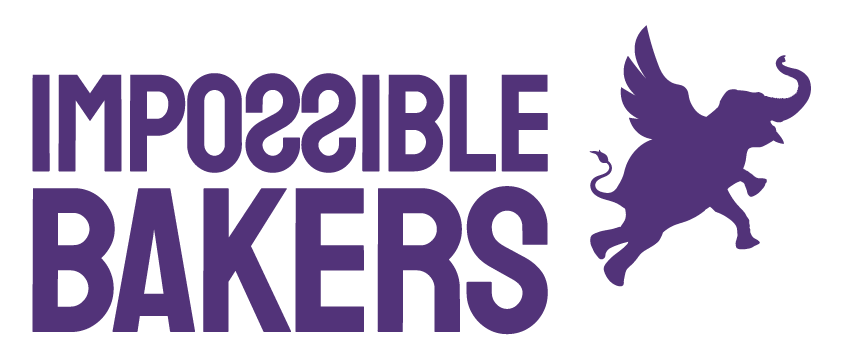INTERMITTENT FASTING: WHAT IT IS, WHAT IT IS BASED ON AND WHAT ARE ITS BENEFITS
Fasting, that is, not eating food, is something we do daily. This natural fast refers to the period of time that goes from dinner to breakfast the next day, a few hours during which we do not eat anything because we spend them sleeping. By the way, have you ever wondered where the word “unfasting” came from?...
In recent years, it is intermittent fasting that has become increasingly relevant in the field of nutrition and human dietetics. Although, in reality, intermittent fasting, in one form or another, is a very ancient human practice . For example, several classical religions impose intermittent fasting as a way to purify the body: Islam, Hinduism, Buddhism, etc.
Religions aside, in this article on the Impossible Bakers blog we want to delve deeper into the concept of intermittent fasting, dismantling the myths that surround it and exposing its benefits for the body.
What is intermittent fasting?
Intermittent fasting is a practice that consists of alternating periods of eating food with periods during which we do not eat anything . Its difference from “normal” fasting is that the periods without eating take place when we are awake; That is, we give up eating voluntarily , not because it is physically impossible for us to do so .
It can also be understood, therefore, as an extension of normal fasting , a few extra hours in a state of wakefulness during which we decide not to eat food.
What is intermittent fasting based on?
To understand what intermittent fasting is based on, we must first be familiar with macronutrients and the main functions they perform in our body .
Macronutrients are a group of nutrients made up of carbohydrates, fats and proteins , structurally complex biomolecules that the digestive system must break down into smaller molecules that cells can absorb.
- The main function of carbohydrates is to supply energy to the body . If carbohydrates are available (something common in traditional diets), the body will turn to them first to obtain the energy it needs to carry out its processes.
- Fats, for their part, constitute the body's energy reserves . When carbohydrate intake is lower and, with it, the availability of this macronutrient, it is the stored fats that are (also) burned to produce energy.
- Finally, proteins , made up of molecules called amino acids , serve mainly to build and repair tissues, regulate certain hormones, and strengthen the immune system . However, when there is not even enough fat available, the body turns to the proteins that make up muscle tissues to produce energy; but it must be said that this occurs in cases of starvation, for example, in an advanced phase of a hunger strike.
When we eat every 3-4 hours , which is what has traditionally been recommended, the body knows that it will receive energy from outside, so it will burn very little or not a single gram of body fat . On the other hand, when we go several hours without eating (such as when sleeping), we deprive it of the external energy obtained through food.
Given this lack of caloric intake, of exogenous energy, the level of insulin, a hormone that intervenes in the storage of fat, decreases . This tells the body to start burning stored fat to obtain the necessary energy .
Intermittent fasting is based on prolonging the time we spend without eating after waking up , to increase fat burning. Likewise, it is based on the consumption of just the calories that we need for the day , proposing the consumption of healthier foods: there is no point in fasting if, during the hours that we can eat, we gorge on products with many calories and a high glycemic index. and low nutritional density.
Does all this mean that when fasting intermittently it would be counterproductive to consume fat? Actually, it's the other way around:
If we give fat to the body, it knows that it will have plenty of reserves to use and that, in fact, it uses it. On the other hand, if we deprive it of fats, the body “gets scared” and tends to store them in greater quantities “because of what might happen.”

Types of intermittent fasting
There are different types of intermittent fasting depending on the number of hours we leave between the last meal and the next . There are also other modalities that consist of doing it on alternate days, or skipping certain meals throughout the day .
Fasting 12:12
It is one of the simplest types, and consists of not eating for 12 hours a day , being able to eat the remaining 12. In this fast, for example, a person would have dinner at 8:00 p.m. and not have breakfast until 8:00 a.m. the next day.
Fasting 16:8
This type of intermittent fasting consists of not eating for 16 hours after the last dinner . Basically, breakfast is eliminated, and you eat again at lunch time, between 12:00 and 13:00. There are also those who prefer to have breakfast in the morning and skip dinner.
Fasting 18:6
It is similar to the previous one, and in it we add a couple more hours before lunch : instead of doing it around 12:00 or 1:00 p.m., we do it around 2:00 p.m. or 3:00 p.m., depending on the time of day. the one we had for dinner the day before.
Fast 20:4 (OMAD)
In this type of intermittent fasting we only eat once a day , so it is necessary to plan the intake very well to provide the body with all the necessary nutrients. This type of fasting is also commonly known as OMAD, One Meal A Day .
One day fast
It consists of not eating anything for an entire day , returning to eating normally the next. Another similar modality is to fast for certain full days of the week . For example, do not eat anything on Wednesdays and Fridays.
Choosing a type of intermittent fasting will depend on our needs and our pace of life . In any case, those who want to start intermittent fasting should start with 12:12, since it is the least strict of all. The most important thing is to listen to your body and eat when there is a feeling of real hunger .
Benefits of intermittent fasting
Numerous studies have shown the benefits of intermittent fasting, such as:
- Reduction of body fat . This benefit is the most logical, since intermittent fasting seeks precisely to encourage the burning of the body's fat reserves.
- Improved insulin sensitivity . This means that the pancreas must produce less insulin so that the cells can absorb glucose in the blood, thus reducing the probability of suffering from prediabetes and type 2 diabetes.
- It has also been related to the reduction of bad cholesterol , with the consequent improvement in circulation and the reduction of coronary diseases, such as arteriosclerosis.
- Promotes the production of growth hormone , especially fasts of 24-48 hours.
- It combats oxidative stress , that is, it reduces the level of free radicals that cause cellular aging.
- It contributes to autophagy , that is, detoxification and cleansing at the cellular level.
Contraindications to intermittent fasting
Like other nutritional strategies, not everything is recommended for everyone. Intermittent fasting also has contraindications for those who suffer from eating disorders (anorexia, bulimia...), pregnant women, children and adolescents of growing age, and people following certain pharmacological treatments .
It is important to know that, especially people who are new to this practice, will suffer some “unpleasant” symptoms, such as mood changes, irritability, headache, fatigue, cravings, dehydration, constipation and halitosis. However, these secondary symptoms will subside over the days, as the body gets used to these new eating habits.
The above are the symptoms of what is known as the keto flu , and they appear when the body stops using glucose as the main source of energy in favor of fats. In other words, they occur when the body begins to detoxify itself from excess carbohydrates and sugars. It is very important to hydrate correctly, since this change in the body causes a significant loss of water and some minerals.
Some myths about intermittent fasting
Drinking water and infusions break intermittent fasting
Water and infusions keep the body hydrated and help reduce fatigue symptoms caused by intermittent fasting . So not only do they not break the fast, but it is recommended to take them. As for coffee, it should be drunk alone, without milk, oat milk, cream or, prohibited, sugar.
Intermittent fasting reduces the level of muscle mass
Intermittent fasting can speed up metabolism and reduce levels of accumulated fat, not muscle mass . The body consumes the protein reserves that form muscles when it does not have enough fat, but this is something that does not happen when fasting.
Makes sports performance lower
It does not have to be this way. Everything will depend on the type of physical training that is done and the consumption of calories necessary for it . If, during the hours when eating is allowed, we provide the body with just the necessary calories, performance should not decrease. Likewise, if we perform high-intensity sports routines, we can use nutritional supplements .
Lowers sugar levels
Intermittent fasting prevents blood sugar from rising, but does not lower it . When we fast, the body releases hormones such as glucagon and cortisol, which are responsible for using stored glucose as a source of energy.

Intermittent fasting and keto diet
Intermittent fasting and the keto diet are closely related . To explain it, we must first briefly talk about what the keto diet is and the ketosis process .
The keto diet is a dietary routine that consists of the reduction/restriction of carbohydrates in favor of the consumption of quality fats and proteins.
Thanks to the little or no availability of carbohydrates as a source of energy, the body releases the so-called ketone bodies, which are responsible for catabolizing (decomposing) stored fat to produce energy .
As can be deduced, the benefits of intermittent fasting are maximized when we follow a keto-type diet , since the contribution of carbohydrates during the hours when we can eat is minimal, and this forces the body to continue using fats as the main source of energy.
The traditional diets that are still followed today are saturated with carbohydrates , and some of them are especially harmful to the body, such as white sugar.
What's more, it has been shown that the "sweet poison", sugar, causes an increase in dopamine levels in the brain , that is, it gives us a feeling of euphoria. But, consumed in excess and in the long term , it causes much less pleasant effects, such as the risk of becoming overweight, obesity, hypertension, diabetes and serious cardiovascular diseases .
Therefore, reducing carbohydrate consumption and eradicating sugar consumption is one of the keys to leading a healthy lifestyle that minimizes the probability of suffering from any of the above diseases.
Whether you practice intermittent fasting or not, at Impossible Bakers we want to help you improve your quality of life through alternatives to hyperglycemic diets that have so few advantages and so many harms to your health.
To do this, we offer you a wide range of keto products and low-carbohydrate foods , in which the main nutrients are healthy fats (oil, butter...) and high-quality proteins .
Don't give up the taste of good bread or good chocolate : give up the health problems that excess carbohydrates hide.

OTROS ARTICULOS RELACIONADOS
Vivir sin gluten (y con sabor): un homenaje a todas las personas celíacas
Por un poco de azúcar no pasa nada... ¿Seguro que no pasa nada?
The best books for your health
Carbohydrates, two sides of the same molecule
Ketosis and migraine
Essential amino acids: what they are, what they are and why we need them
Transition to a Low-Carb Life
Processed and ultra-processed in baby food
Back to routine
Summer essentials
The sweet poison
All about the Impossible Diet
Our favorite books
How to get back into Ketosis?
Sugar-Free & Low-carb: real health
Woman and low-carb diet
Keto Flu Effects: What Are They and How to Soften Them?
How do I know if I am in ketosis?
Erythritol vs Sugar
Keto and fasting
Foods allowed and not allowed on the Keto diet
Benefits of the Keto Diet vs. other diets
What is the Keto or Low Carb diet?
Read more

Carbohydrates, two sides of the same molecule
Carbohydrates are part of the so-called macronutrients , a heterogeneous group that they make up along with fats and proteins. These three types of macronutrients are processed by our digestive sys...
Read more
Control your glucose, protect your heart
Blood glucose control is essential for your heart. Cardiovascular health is a crucial aspect of our overall well-being. Heart disease represents one of the leading causes of mortality worldwide, an...
Read more



